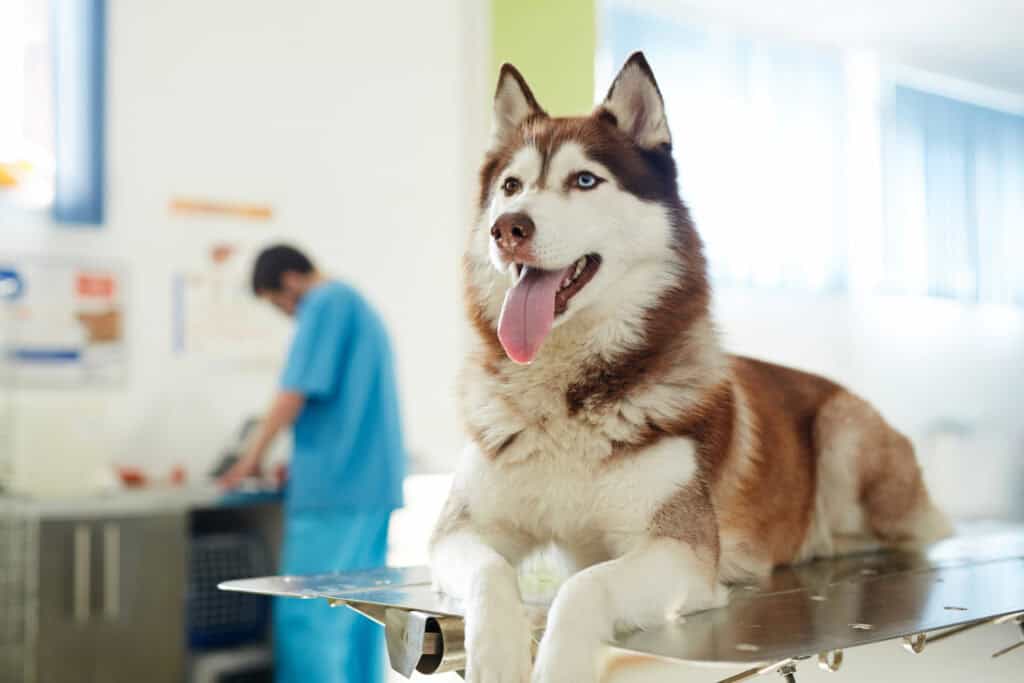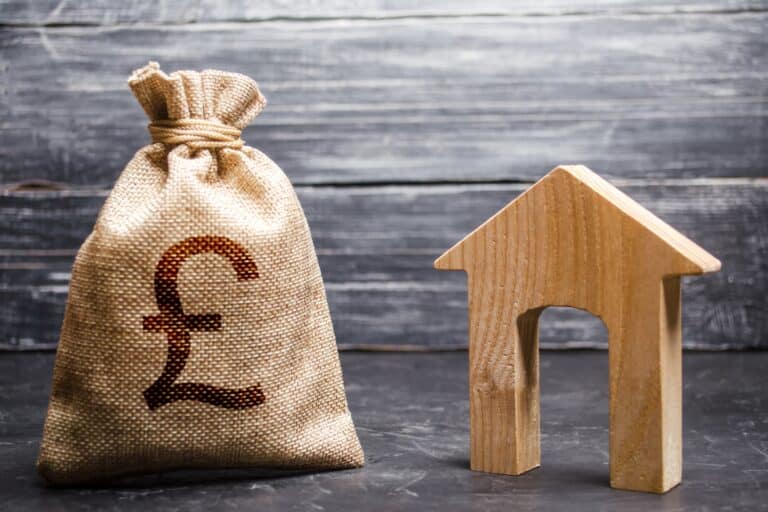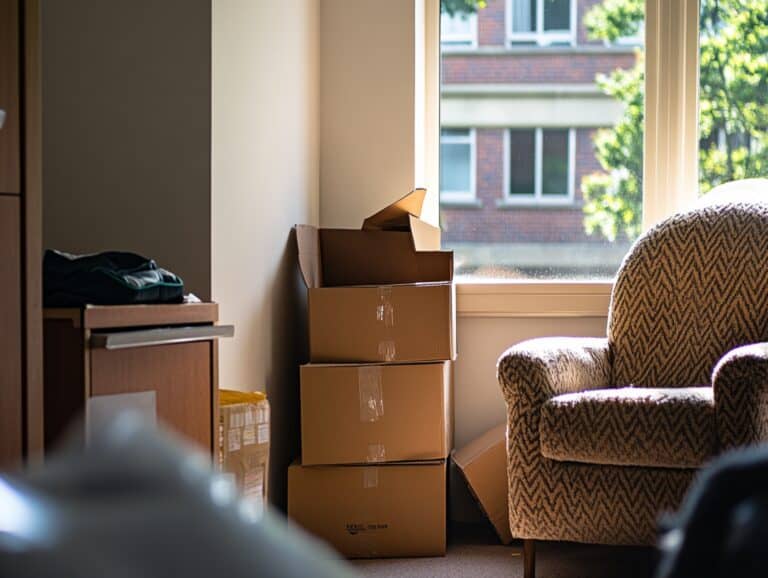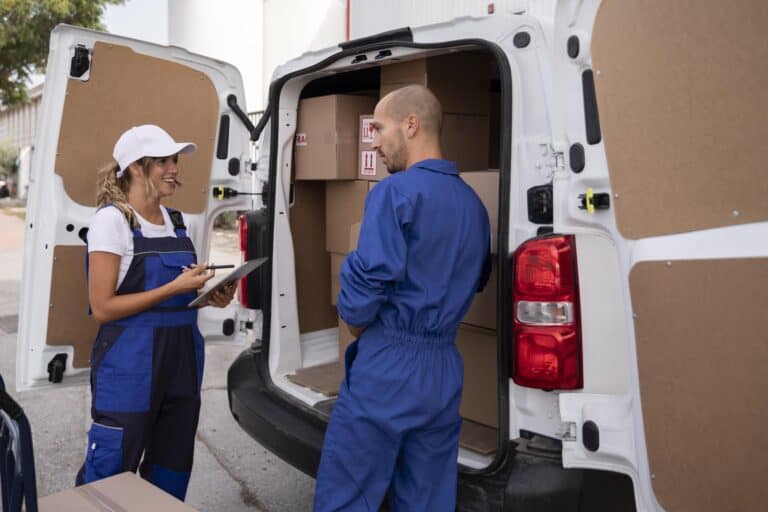Managing pet transportation when moving house can be challenging. This article offers essential tips on preparing your pets, choosing a pet-friendly moving company, ensuring their safety during transport, and helping them adjust to their new home. By following these guidelines, you can minimise stress for your pets and ensure a smooth transition to your new environment, making the move a positive experience for everyone involved.
Key Takeaways
- Maintain your pet’s routine and gradually introduce moving stimuli to minimise anxiety and create a sense of security during the move.
- Choose a moving company experienced with pets, ensuring they have the proper handling skills and policies to manage your pet’s needs throughout the move.
- Prepare a safe and calm environment in the new home with familiar items, and establish a post-move adjustment period to help your pet acclimate to the new surroundings.
Preparing Your Pet for the Move
Their well-being relies heavily on a gradual preparation for the move. The first step is to maintain their routine during the weeks leading up to the move. Keeping consistent feeding times, walks, and play sessions can significantly reduce their anxiety levels. This familiarity provides a sense of security amidst the chaos of packing and moving.
Start introducing moving boxes into your home ahead of time. This helps your pet get used to the idea of moving and reduces their stress when they see the boxes being packed. For pets in Lewisham, take them for walks around the neighbourhood to familiarise them with their new surroundings. This gradual acclimatisation can make the transition smoother and less intimidating for them.
As the moving day approaches, ensure your pet feels loved and secure by sticking to their old routine. This might mean maintaining the same feeding and walking schedule even as the packing intensifies. This approach helps alleviate your pet’s anxiety about the impending changes, making them feel more comfortable.
Choosing the Right Moving Company
A stress-free move for your pet hinges on the selection of the right moving company. Look for a company experienced in handling pets, as they can offer tailored advice and specialised services. A profound understanding of your pet’s needs by the moving company, along with specific pet handling policies, is vital. This ensures that they are well-prepared to accommodate your furry friend’s requirements during the move.
Make sure to check that the moving company’s staff are DBS-checked and professionally trained to handle moves. Opting for a company that offers a personal move manager can also be beneficial. This person can guide you through the entire moving process, ensuring everything is handled smoothly and efficiently. By choosing a reputable moving company, you can focus on your pet’s comfort and well-being, knowing that the logistics are in good hands.
Safe Transport of Pets
The paramount priority is to ensure the safe transport of your pets. Use appropriate carriers and familiarise your pets with them well before the move. You can leave the carrier open with treats or toys inside to help create positive associations. This can help your pet feel more comfortable entering the carrier. For dogs, consider using a fitted dog guard in the car to keep them secure.
During the journey, make sure to take frequent breaks, especially during long car trips. This allows dogs to stretch their legs and relieve themselves and helps manage cats’ stress by providing a portable litter box. Including your pet’s favourite food and familiar items like toys and blankets can also help calm their nerves.
For specific pets like rabbits, ensure they have a good carry case, food, and water, and place the carrier on a flat surface …
For specific pets like rabbits, ensure they have a good carry case, food, and water, and place the carrier on a flat surface in the car. By taking these steps, you’ll make the journey less stressful for your pets and ensure their safety and comfort throughout the move.
Preparing a Safe Space in the New Home
Their smooth transition relies on setting up a safe space for your pets in your new house. Unpack their bedding, food, water, and favourite toys first when you arrive at your new Lewisham home. This helps them feel more at home and reduces their anxiety in the new environment.
Ensure the garden is secure before allowing your dog to explore. Check for holes in fences or poisonous plants. For indoor pets, set up a comfortable room with familiar items like their bedding and toys. This designated space will serve as a safe haven where they can retreat and feel secure amidst the unfamiliar surroundings. By preparing a safe space in advance, you’ll help your pet adjust more quickly and comfortably to their new home.
Visiting the Local Vet
A visit to your local vet in Lewisham is essential before moving. Ensure that all vaccinations are current and obtain the necessary vaccination certificates. This step is crucial for maintaining your pet’s health and compliance with local regulations.
To ensure your pet’s health and well-being during the move, make sure to:
- Address any travel issues your pet may have, such as motion sickness or anxiety.
- Register your pet with a local vet either just before or soon after you move to ensure you have access to medical care and regular checkups in the new area.
- Update and transfer your pet’s medical records to ensure continuity of care.
By taking these precautions, pet owners will ensure their pet’s health and well-being during the move.

Managing Anxiety and Stress
While moving can induce stress in pets, there are strategies to manage their anxiety and guarantee a stress-free moving experience. One effective method is to use pheromone products, such as plug-in diffusers or dog collars infused with Dog Appeasing Pheromones (DAP). Start using these products at least 24 hours before any major changes at home to help keep your pet calm.
Maintaining a consistent routine is another essential strategy. Keep up with your pet’s daily routine, including feeding times and walks, as much as possible during the move. This consistency helps them feel secure and reduces their stress levels. Providing plenty of affection and reassurance can also make a significant difference.
If your pet is very nervous, consider having someone familiar stay with them during the move. Hiring a pet sitter or using a boarding kennel can also be beneficial, as it ensures your pet remains in a familiar environment, reducing their stress levels. By following these tips, you can help your pet manage their anxiety and adjust more smoothly to the new environment.
Special Considerations for Different Pets
During a house move, each pet has unique needs. Cats, dogs, small pets, and fish each require specific considerations to ensure their safety and comfort. Understanding these needs and preparing accordingly can make the moving process smoother for both you and your pets when moving house with pets.
Cats
Cats are particularly sensitive to changes in their environment. To help them adjust, you can:
- Create a ‘safe room’ in both your old and new homes with familiar items
- Keep them indoors for at least three weeks to help them establish their territory
- Use pheromone diffusers or sprays to help keep them calm during the move
These strategies can help make the transition smoother for your furry friend, especially when it comes to adapting to a new litter tray, the cat.
Older cats may experience more stress and should be moved slowly and carefully. Here are some steps to help your cat adjust more comfortably to their new environment:
- Keep them in one room at first, preferably the same room where they can find their bed or toys.
- Allow them to explore the room and get comfortable.
- Slowly introduce them to the rest of the house, one room at a time.
- Provide familiar items, such as their bed or toys, to help them feel more at ease.
- Be patient and give them time to adjust.
By taking these steps, you’ll help your cat adjust more comfortably to the new environment.
Dogs
For dogs, maintaining their previous routine as much as possible will help them feel more comfortable in the new environment. Unpack your dog’s belongings first and create a designated space with familiar scents from their previous home. This helps them feel more secure and reduces their anxiety.
Allow your dog to explore the new home and garden on a leash, ensuring they gradually become familiar with their new surroundings. By taking these steps, you’ll help your dog settle in more quickly and comfortably.
Small Pets
Moving house with small pets like guinea pigs and hamsters requires keeping their habitats stable and well-ventilated. Ensure their enclosures are secure and provide familiar items to help them feel more comfortable. This stability is crucial for their well-being during the move.
Fish

For fish, maintaining a constant water temperature and ensuring enough oxygen in the fish tank water is vital during the move. Prepare necessary items like nets, fish bags, and an insulated transporting box. Do not feed your fish the day before you plan to move the tank.
To transport your aquarium safely, follow these steps:
- Wrap the aquarium in bubble wrap or blankets to protect it during transport.
- Secure the wrapped aquarium in the vehicle to prevent movement.
- Upon arrival, set up the tank immediately using saved water and reassemble the equipment.
- Acclimate fish to the tank by floating the bags on the surface for 45 minutes, mixing in tank water every 10 minutes.
By following these steps, you can ensure smooth and safe transport for your fish tank.
TIP
When moving house, each pet has unique needs that must be addressed to ensure their safety and comfort. Understand and prepare the specific requirements for each pet to make the moving process smoother for you and your pets.
Post-Move Adjustment Period
Their well-being rests on helping them adjust to their new Lewisham home. Maintain consistent feeding and walking schedules to reassure them that all is well. Introduce your pet to the new home gradually, starting with a small room before allowing them full access.
Be kind and reassuring, allowing your pet the freedom to explore and adjust at their own pace. Associate pleasurable experiences with the new home and provide familiar items like their bed and toys to help them settle. By taking these steps, you’ll make the transition period smoother for your pet.
Hiring Extra Assistance
To make the move easier for both you and your pet, think about hiring extra assistance. Options include hiring a pet sitter, using a boarding kennel, or employing pet relocation services. These services ensure your pet is well taken care of and out of the way during the move, helping your pet settle in the new environment.
Leaving your dog with a friend or family member or in kennels can also be beneficial. This allows you to focus on the moving process without worrying about your pet’s well-being. Thoroughly vet any pet-sitter or boarding facility to ensure your pet’s safety and comfort. By arranging for extra assistance, you’ll ensure a smoother move for your pet.
Final Checks Before Moving Day
Prior to moving day, it’s imperative to update your pet’s microchip and identification details, linking them to the correct new address and contact information. This step is crucial in case your pet gets lost during the move.
Ensure all pet medications, including heartworm and flea treatments, are packed and labelled. This preparation ensures that you have everything you need for your pet’s health and well-being during the transition. By taking these final checks, you’ll be well-prepared for moving day.
Summary
In summary, managing pet transportation when moving house involves careful planning and attention to detail. By maintaining routines, choosing the right moving company, ensuring safe transport, and preparing a comfortable space in your new Lewisham home, you can ensure a stress-free moving experience for your pets. Remember to visit the local vet, manage your pet’s anxiety, and consider the unique needs of different pets. Hiring extra assistance and conducting final checks before moving day can also make the process smoother. With these tips, you and your pets can enjoy a successful and stress-free move.
Frequently Asked Questions
How can I prepare my pet for moving house?
To prepare your pet for moving house, maintain their routine, introduce moving boxes, and familiarise them with the new surroundings. This will help reduce their stress and anxiety during the transition.
What should I look for in a moving company when I have pets?
Look for a moving company that has experience in handling pets and specific policies in place for their care. It’s important to ensure they understand your pet’s needs.
How can I ensure the safe transport of my pets during the move?
To ensure the safe transport of your pets during the move, use appropriate carriers, take frequent breaks during the journey, and provide familiar items for comfort. This will help minimise stress and keep your pets safe during the move.
What should I do to help my pet adjust to the new home?
To help your pet adjust to the new home, maintain consistent feeding and walking schedules, allow gradual exploration, and provide familiar items. This will help them feel more secure and comfortable in their new environment.
Should I hire extra assistance for my pet during the move?
Yes, hiring extra assistance like pet sitters or relocation services can help ensure your pet’s well-being and reduce stress during the move.







